Most early childhood educators/caregivers are deeply devoted to calendar time. It’s a very ‘school-ish’ thing to do yet how many of us have stopped to analyze the educational benefits of this common, early morning routine? In this article we will discuss a new approach to calendar time in preschool.
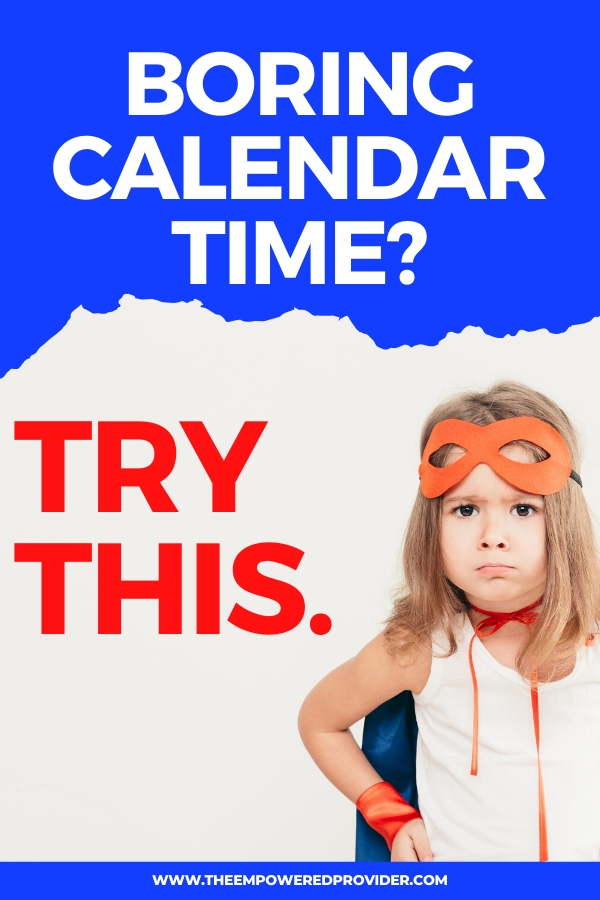
Does Your Calendar Time Feel Forced?
Be honest.
Does your calendar time consist of kids with excited faces and lots of chatter and engagement?
Or is it a time for kids to sit still, be quiet?
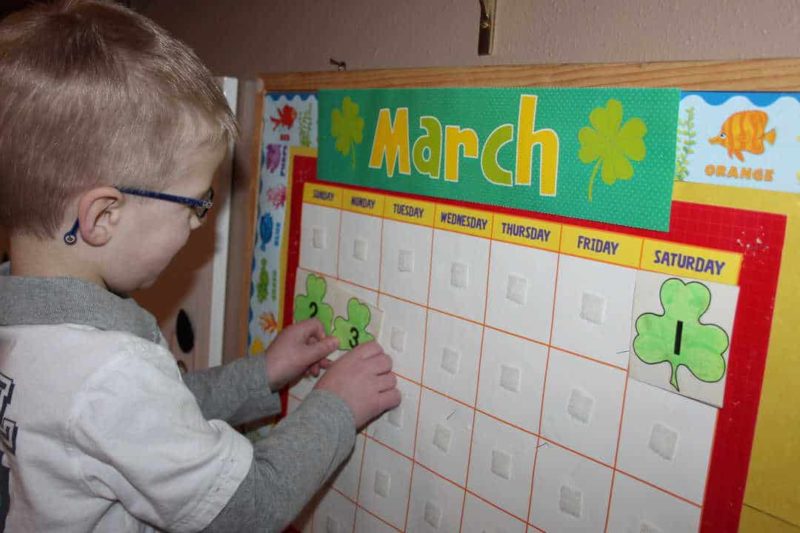
CONFESSION: I would require my group to sit still. No one was allowed to talk but me. The extent of our engagement during this time was asking a child to come and place today’s date card on the calendar.
Back in the day, my crew of toddlers and preschoolers used to sit in a semi-circle in front of a huge calendar grid and would count along with me and my fancy pointer; sounding more like robots than excited children.
I would ask the same question every day, “If today is _______ , then yesterday was ________, and tomorrow will be ______?”
CONFESSION: 99% of the the kids in my group had no clue that tomorrow was Friday and yesterday was Wednesday; nor did they care.
Next, we would announce the month, followed by singing our ‘Days of the Week’ song. After that, we would talk about the weather.
It was a real buzz-kill.
Most of my time was spent reminding the three, four and five-year olds to sit on their pockets and to put their “eyes on me”.
The Illusion of Calendar Time
Upon reading through research of what is developmentally appropriate for toddlers and preschoolers, I’ve decided that calendar time is more of an expected ritual for most early childhood educators.
This activity gives the illusion that kids are in a rich learning environment proving they are doing Kindergarten-ready activities.
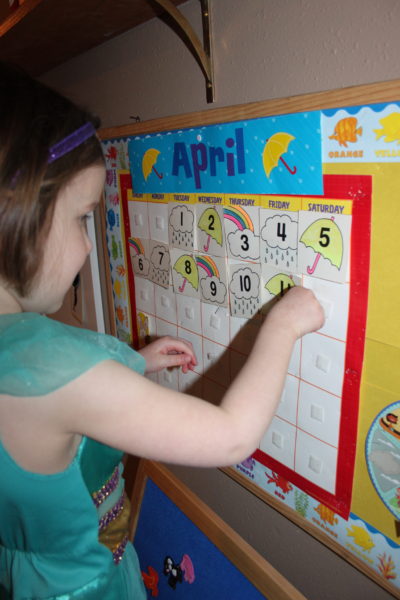
On the outside, it looks as though these young children are catching on. They’re getting it! Listen to how they count and can sing the days of the week!
Yes, this is true. But is it meaningful to them?
No.
I was engineering tiny calendar robots who sat nicely with little to no zest in their beautiful eyes. There were a few rowdy friends…shouting out the numbers on the calendar at the the top of their lungs with great gusto; but they didn’t grasp the concept of time. Calendar Time was just something we did, so they followed suit.
MY LITTLE ‘CALENDAR ROBOTS’ COULD:
- Recite the numbers 1-31 from a place of memory; not a place of function and understanding.
- Sing songs that included all of the week days or months in a year as long as I was singing along.
- Impress their parents with these rote abilities.
Is Calendar Time Appropriate for Preschoolers?
A wonderful article, published by the National Association for the Education of Young Children (NAEYC) addresses this question of whether or not teaching calendar concepts is relevant in early childhood. In this article, the authors Sallee J. Beneke, Michaelene M. Ostrosky, and Lilian G. Katz, share that there is a barrier to understanding the calendar fully, even after much repetition by the teacher. They share:
To participate meaningfully in calendar activities, young children must understand that time is sequential. The sequences include yesterday, today, and tomorrow; morning, afternoon, and evening; Sunday, Monday, Tuesday, and so on. Children also must be able to conceptualize before and after and think about future and past events…. Thus, young children can talk about things that have happened or will happen, but they cannot yet understand or talk about these events in terms of units of time (days, weeks) or sequence. This child development knowledge draws into question the usefulness of calendar activities for children under age 6.
Sallee J. Beneke, Michaelene M. Ostrosky, and Lilian G. Katz
NEW CALENDAR IDEAS FOR PRESCHOOL
In addition to doing some online research, I had attended a few training sessions lead by instructors who were passionate about play-based learning and developmentally appropriate activities in early childhood settings. They spoke boldly about their opinions regarding calendar time and how it has no place in a preschool setting.
I began to open my mind to calendar time alternatives. I started to observe the kids in my group during this time and promised to make this group time more meaningful.
What young kids do know about the calendar:
The kids in my crew didn’t care if it was October, but they did get excited when they found out Halloween happened in October.
The toddlers and preschoolers knew it was winter and they loved to play in the snow, but they didn’t necessarily understand that we were in the month of January.
They didn’t care if it was a weekday or the weekend, but they were interested if the next day was going to be a ‘stay at home day’ or a ‘school day’.
HOW TO MAKE CALENDAR TIME MEANINGFUL FOR YOUNG KIDS
I simply wasn’t ready to cut calendar time out completely because I knew the kids in my group loved to be informed about our time together.
Kids are really good at anticipating special occasions like birthdays or Valentine’s Day or Crazy Hair Day. Ever have a child ask you how many more days until their birthday? Or invite another child to their birthday party which is “only” 8 months away?
Just like everything else in the play space, I needed to find a way to make calendar time meaningful to them.
How I Transitioned to a Linear Calendar
Thankfully, I stumbled upon a popular preschool website called “Pocket of Preschool”. Jackie is a preschool teacher and had written a post about how to build a linear calendar that changed everything for me and our calendar time.
I went to the Teachers Pay Teachers site and purchased and downloaded her calendar kit.
Jackie does a great job of explaining how to construct the calendar too. Read on for the steps I took to create a linear calendar for our classroom.
Constructing Your Linear Calendar
To accomplish this task, you’ll need to purchase a blank calendar poster (one with just the grid for a calendar). They might even sell plain classroom calendar grids at the Dollar store! OR! Better yet, you may have one hanging on your wall already….Time to cut this bugger up into pieces:
- First, cut off the top row that shows the days of the week.
- Then, carefully cut out each ROW until you have approximately 5 strips.
- Tape these strips together into one really long piece.

This is your linear calendar.
Tip: To increase the cuteness factor, I bought a piece of black tag board and cut horizontal strips that were a little bit bigger than my calendar strip so that it had a tidy border.
Follow Jackie’s instruction in your download for what you need to do to create the number cards, etc.
How to Make Your Linear Calendar Cards
- Print, cut and laminate all of the calendar cards.
- Sift through the special occasion cards and chose the ones you think will apply to your group.
- Discard the cards you will not use.
- Adhere velcro dots to the back of each calendar square as well as to your grid. My favorite dots!
CHANGE THE FOCUS FOR PRESCHOOL CALENDAR TIME
Rather than focusing on the month, the days of the week or the date, use calendar time as a way of building community. This is a great time to talk about upcoming events the excited about, answer any questions they may have, or even better…collect input on the kinds of activities they would like to see happen each month.
This type of calendar time with preschoolers should not be still and quiet. Encourage participation and movement from each child.
With movement comes engagement…with engagement, comes learning!
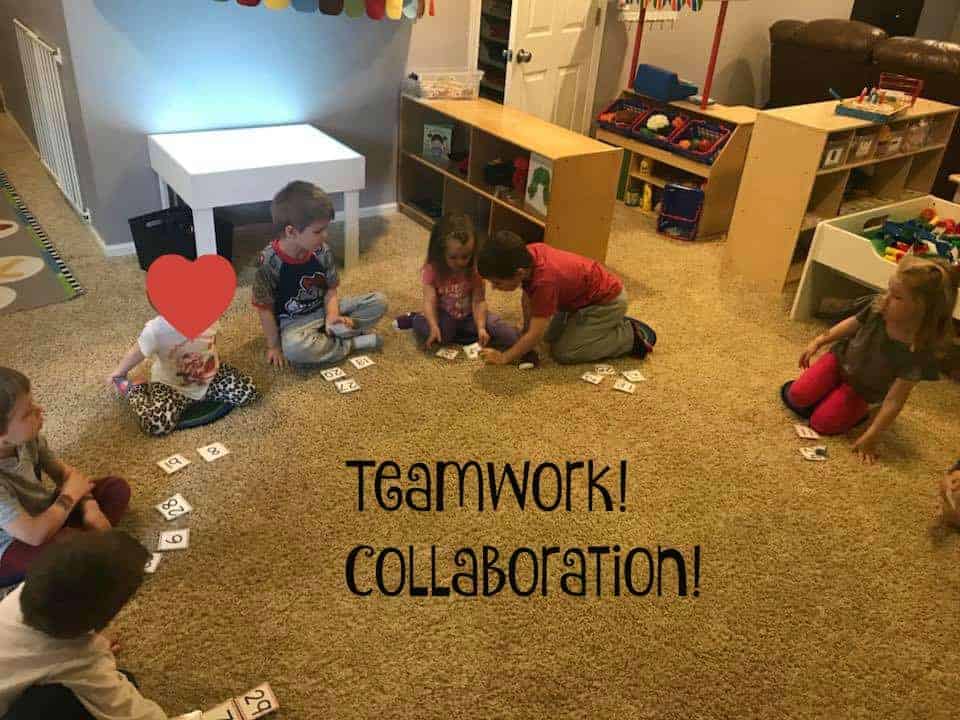
HOW TO CONDUCT CALENDAR TIME WITH A LINEAR CALENDAR AT THE BEGINNING OF EACH MONTH
- Each month, carefully take down the number cards and pass them out to the kids. Each child will have a couple of cards. Be sure to mix them up!
- Use Magic Erasers to wipe off any dry erase markings from the previous month.
- Starting at the beginning of the calendar; asking the group who has the #1 card.
- The child with the first card will come up and place it on the calendar.
- Continue on this way, phrasing your question in ways such as, “What comes after number one?”
- Once your linear calendar is filled to 30 or 31 days, you can begin adding your activity cards to the second row of the grid.
- Some kids will be more interested in this activity than others. Let those who are uninterested come and go throughout the calendar set-up.
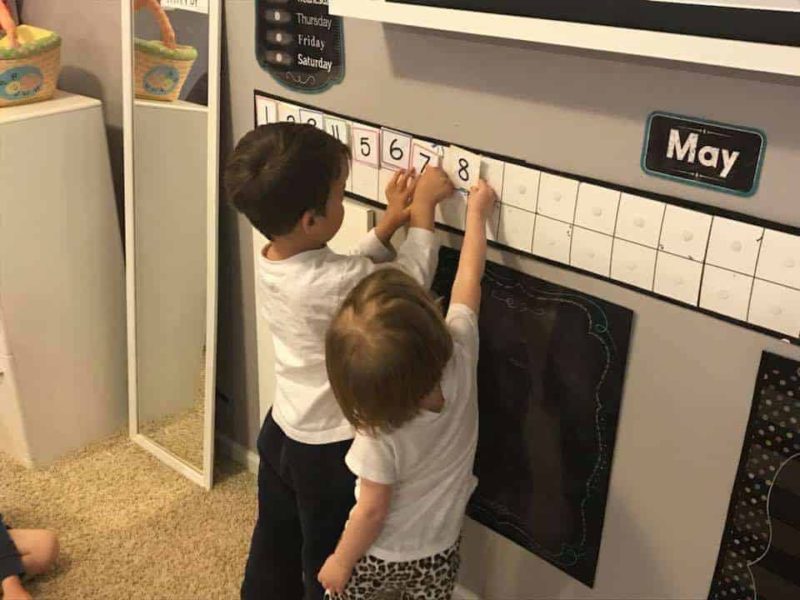
HELPFUL TIPS WHEN ADDING ACTIVITIES TO YOUR CALENDAR:
- Each month, send home a paper copy of your monthly calendar.
- You can distribute this calendar to each child in your group as you are adding the event cards to the linear calendar on the wall.
- Use a lot of graphics on your calendar to support the needs of your non-readers. (i.e. add a firetruck to your Fire Drill day or a picture of a Birthday Cake to the date of someone’s birthday).
CALENDAR EXAMPLE: The kids and I would look through the paper calendar and talk about the events coming up for the month and then find an occasion card to match. For example, in March we may have picked out the following activity/occasion cards: birthday cake for Dr. Seuss’ birthday, the red color card for “wear something red day”, a shamrock card for St. Patrick’s Day, etc.

HOW TO USE YOUR LINEAR CALENDAR THROUGHOUT EACH WEEK
- Choose a ‘calendar helper’ to come up and tap each card using a stick or special wand.
- Count along with the ‘calendar helper’.
- Use a dry erase marker to put an ‘X’ on yesterday’s date.
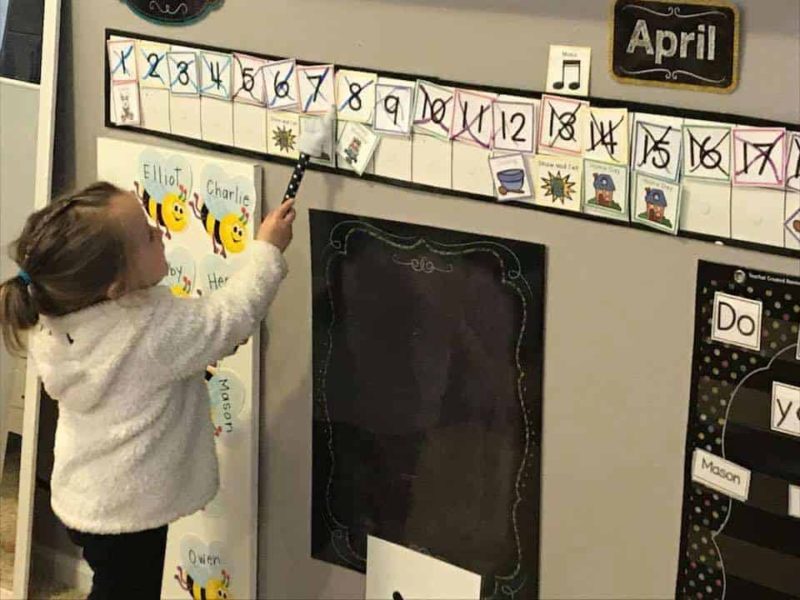
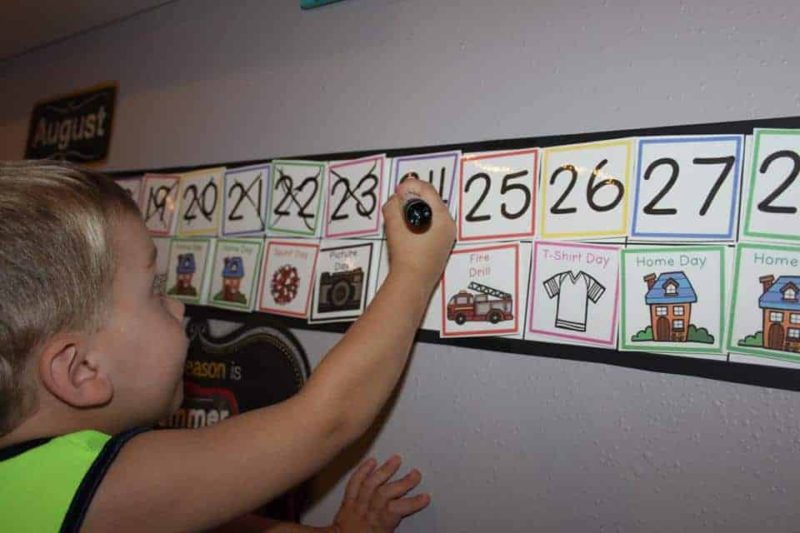
Why Use a Linear Calendar?
If I haven’t convinced you by now to change up your calendar routine, here are a few more reasons why I now love calendar time thanks to a linear calendar and a fresh approach to our meeting time each morning:
- The change in energy around calendar time is almost immediate.
- The linear calendar mimics a number line. This helps to illustrate concepts like “yesterday”, “today” and tomorrow” in a format they recognize.
- Calendar time now requires teamwork through interactive tasks.
- The kids have a better understanding of the events that were happening each month.
- Everyone is engaged and excitement fills the room!
How will you make calendar time meaningful for your crew?
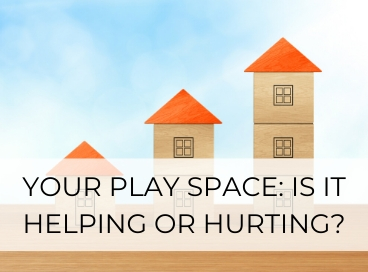
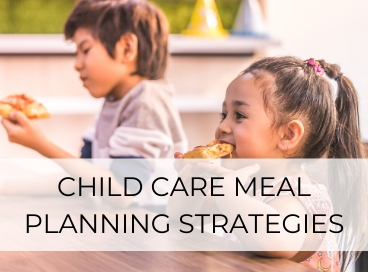
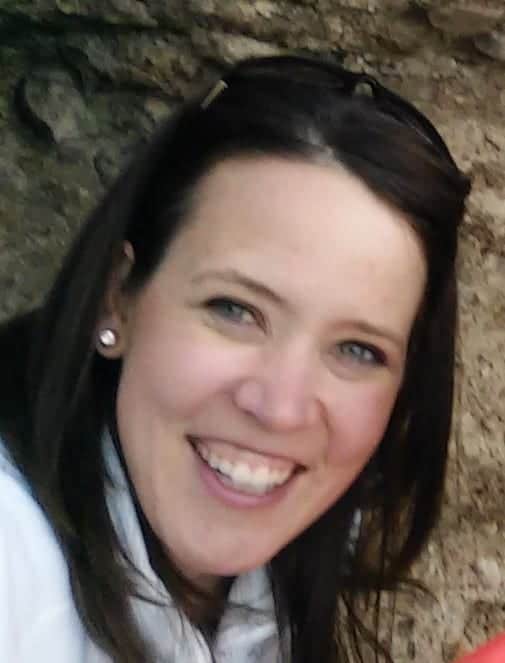 Hey there! I hold the work of early childhood educators (my title for family child care providers) in the highest regard! If you are looking for ways to better your business or to find inspiration to bring joy and meaning to your classroom, then you've come to the right place! Click here to read more!
Hey there! I hold the work of early childhood educators (my title for family child care providers) in the highest regard! If you are looking for ways to better your business or to find inspiration to bring joy and meaning to your classroom, then you've come to the right place! Click here to read more!
I remember my oldest coming home from preschool and telling me they learned about maps one day. You could use them to go places like Mexico, or June… 😂
Oh…I hear June is so nice this time of year on Travelocity… LOL Cute story! Thanks for sharing!